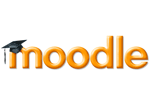What is CLIL?
Content and Language Integrated Learning (CLIL) is a dual-focused educational approach in which an additional language is used for the learning and teaching of both content and language. The term CLIL was coined in 1994 in Europe, however, CLIL practice has a much longer history.
By the mid-1990s globalization was placing greater linguistic demands on mainstream education, from the primary level through to institutions of higher education. In an integrated world, integrated learning is a desire to improve language-learning opportunities for all young people in order to increase European cohesion and competitiveness.
Classroom principles
According to the 4Cs curriculum (Coyle 1999), a successful CLIL lesson should combine elements of the following:
Content – Progression in knowledge, skills and understanding related to specific elements of a defined curriculum
Communication – Using language to learn whilst learning to use language
Cognition – Developing thinking skills which link concept formation (abstract and concrete), understanding and language
Culture – Exposure to alternative perspectives and shared understandings, which deepen awareness of otherness and self.
In a CLIL lesson, all four language skills should be combined. The skills are seen thus:
Listening is a normal input activity, vital for language learning
Reading, using meaningful material, is the major source of input
Speaking focuses on fluency. Accuracy is seen as subordinate
Writing is a series of lexical activities through which grammar is recycled.
The many faces of CLIL
CLIL is an umbrella term covering a dozen or more educational approaches (eg immersion, bilingual education, multilingual education, language showers and enriched language programmes). What is new about CLIL is that it synthesizes and provides a flexible way of applying the knowledge learned from these various approaches. The flexibility of the approach is, above all, evident in the amount of time devoted to teaching or learning through the second language. CLIL allows for low- to high-intensity exposure to teaching/learning through a second language. The approach can also be used for short-term high-intensity exposure (see figure below).
Font: Uncovering CLIL
Content and Language Integrated Learning in Bilingual and Multilingual Education
Peeter Mehisto, David Marsh & María Jesús Frigols





 Prepara't per les PAU
Prepara't per les PAU










